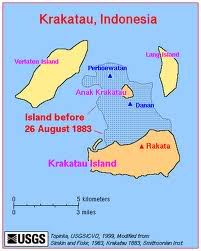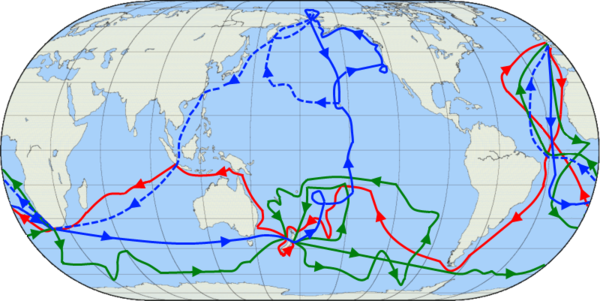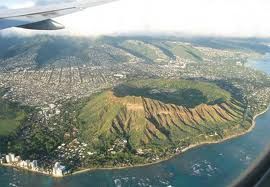Cross posted from The Stars Hollow Gazette
The leaked draft report on global warming by the United Nation’s Intergovernmental Panel on Climate Change paints a dark picture for Earth’s climate. The runaway increase in greenhouse gases is causing the climate to warm at a rate that is could be irreversible.
U.N. Draft Report Lists Unchecked Emissions’ Risks
by Justin Gillis, The New York Times
Using blunter, more forceful language than the reports that underpin it, the new draft highlights the urgency of the risks that are likely to be intensified by continued emissions of heat-trapping gases, primarily carbon dioxide released by the burning of fossil fuels like coal, oil and natural gas.
The report found that companies and governments had identified reserves of these fuels at least four times larger than could safely be burned if global warming is to be kept to a tolerable level.
That means if society wants to limit the risks to future generations, it must find the discipline to leave a vast majority of these valuable fuels in the ground, the report said. [..]
The draft report found that past emissions, and the failure to heed scientific warnings about the risks, have made large-scale climatic shifts inevitable. But lowering emissions would still slow the expected pace of change, the report said, providing critical decades for human society and the natural world to adapt. [..]
Continued warming, the report found, is likely to “slow down economic growth, make poverty reduction more difficult, further erode food security, and prolong existing poverty traps and create new ones, the latter particularly in urban areas and emerging hot spots of hunger.”
If that isn’t bad enough, the ocean’s are choking on plastics:
Plastic rubbish heaps at sea pose bigger threat to Earth than climate change, claims ocean expert
The world’s leading expert on the poisoning of the oceans said he was “utterly shocked” at the increase in plastic floating on the sea in the past five years and warned that it potentially posed a bigger threat to the planet than climate change.
Charles J Moore, a captain in the US merchant marine and founder of a leading Ocean research group, has just finished his first in-depth survey of the Great Pacific Garbage Patch – one of five major expanses of plastic drifting in the world’s oceans – since 2009. [..]
Plastics are now one of the most common pollutants of ocean waters in the world. Pushed by winds, tides and currents, plastic particles form with other debris into large, swirling glue-like accumulation zones, known to oceanographers as “gyres”, which comprise as much as 40 per cent of the planet’s ocean surface, said Captain Moore, who founded the Algalita Marine Research Institute in Long Beach, California.
In a previous study of Southern California’s urban centres, he calculated that they spilled 2.3bn pieces of plastic – from polystyrene foam to tiny fragments and pellets – into the area’s coastal waters in just three days of monitoring.
Just because it’s going to snow in Minnesota, doesn’t mean that the rest of the world isn’t cooking.







 After centuries of dormancy, Mount Vesuvius erupts in southern Italy, devastating the prosperous Roman cities of Pompeii and Herculaneum and killing thousands. The cities, buried under a thick layer of volcanic material and mud, were never rebuilt and largely forgotten in the course of history. In the 18th century, Pompeii and Herculaneum were rediscovered and excavated, providing an unprecedented archaeological record of the everyday life of an ancient civilization, startlingly preserved in sudden death.
After centuries of dormancy, Mount Vesuvius erupts in southern Italy, devastating the prosperous Roman cities of Pompeii and Herculaneum and killing thousands. The cities, buried under a thick layer of volcanic material and mud, were never rebuilt and largely forgotten in the course of history. In the 18th century, Pompeii and Herculaneum were rediscovered and excavated, providing an unprecedented archaeological record of the everyday life of an ancient civilization, startlingly preserved in sudden death. Those that did not flee the city of Pompeii in August of 79 AD were doomed. Buried for 1700 years under 30 feet of mud and ash and reduced by the centuries to skeletons, they remained entombed until excavations in the early 1800s.
Those that did not flee the city of Pompeii in August of 79 AD were doomed. Buried for 1700 years under 30 feet of mud and ash and reduced by the centuries to skeletons, they remained entombed until excavations in the early 1800s.


 Hawaii’s natural beauty, warm tropical climate, inviting waters and waves, and active volcanoes make it a popular destination for tourists, surfers, biologists, and volcanologists alike. Due to its mid-Pacific location, Hawaii has many North American and Asian influences along with its own vibrant native culture. Hawaii has over a million permanent residents along with many visitors and U.S. military personnel. Its capital is Honolulu on the island of Oahu.
Hawaii’s natural beauty, warm tropical climate, inviting waters and waves, and active volcanoes make it a popular destination for tourists, surfers, biologists, and volcanologists alike. Due to its mid-Pacific location, Hawaii has many North American and Asian influences along with its own vibrant native culture. Hawaii has over a million permanent residents along with many visitors and U.S. military personnel. Its capital is Honolulu on the island of Oahu. On this day in 1911, a dispatcher in the New York Times office sends the first telegram around the world via commercial service. Exactly 66 years later, the National Aeronautics and Space Administration (NASA) sends a different kind of message–a phonograph record containing information about Earth for extraterrestrial beings–shooting into space aboard the unmanned spacecraft Voyager II.
On this day in 1911, a dispatcher in the New York Times office sends the first telegram around the world via commercial service. Exactly 66 years later, the National Aeronautics and Space Administration (NASA) sends a different kind of message–a phonograph record containing information about Earth for extraterrestrial beings–shooting into space aboard the unmanned spacecraft Voyager II. allowed it to be kept in the plane of the Ecliptic (the plane of the Solar System) so that it could be sent on to Uranus and Neptune by means of utilizing gravity assists during its fly-by of Saturn in 1981 and of Uranus in 1986. Because of this chosen trajectory, Voyager 2 could not take a close-up look at the large Saturnian moon Titan as its sister space probe had. However, Voyager 2 did become the first and only spacecraft to make the spaceflight by Uranus and Neptune, and hence completing the Planetary Grand Tour. This is one that is made practical by a seldom-occurring geometric alignment of the outer planets (happening once every 175 years).
allowed it to be kept in the plane of the Ecliptic (the plane of the Solar System) so that it could be sent on to Uranus and Neptune by means of utilizing gravity assists during its fly-by of Saturn in 1981 and of Uranus in 1986. Because of this chosen trajectory, Voyager 2 could not take a close-up look at the large Saturnian moon Titan as its sister space probe had. However, Voyager 2 did become the first and only spacecraft to make the spaceflight by Uranus and Neptune, and hence completing the Planetary Grand Tour. This is one that is made practical by a seldom-occurring geometric alignment of the outer planets (happening once every 175 years). The rectangular two-and-a-half-mile track linked four turns, each exactly 440 yards from start to finish, by two long and two short straight sections. In that first five-mile race on August 19, 1909, 12,000 spectators watched Austrian engineer Louis Schwitzer win with an average speed of 57.4 miles per hour. The track’s surface of crushed rock and tar proved a disaster, breaking up in a number of places and causing the deaths of two drivers, two mechanics and two spectators.
The rectangular two-and-a-half-mile track linked four turns, each exactly 440 yards from start to finish, by two long and two short straight sections. In that first five-mile race on August 19, 1909, 12,000 spectators watched Austrian engineer Louis Schwitzer win with an average speed of 57.4 miles per hour. The track’s surface of crushed rock and tar proved a disaster, breaking up in a number of places and causing the deaths of two drivers, two mechanics and two spectators.